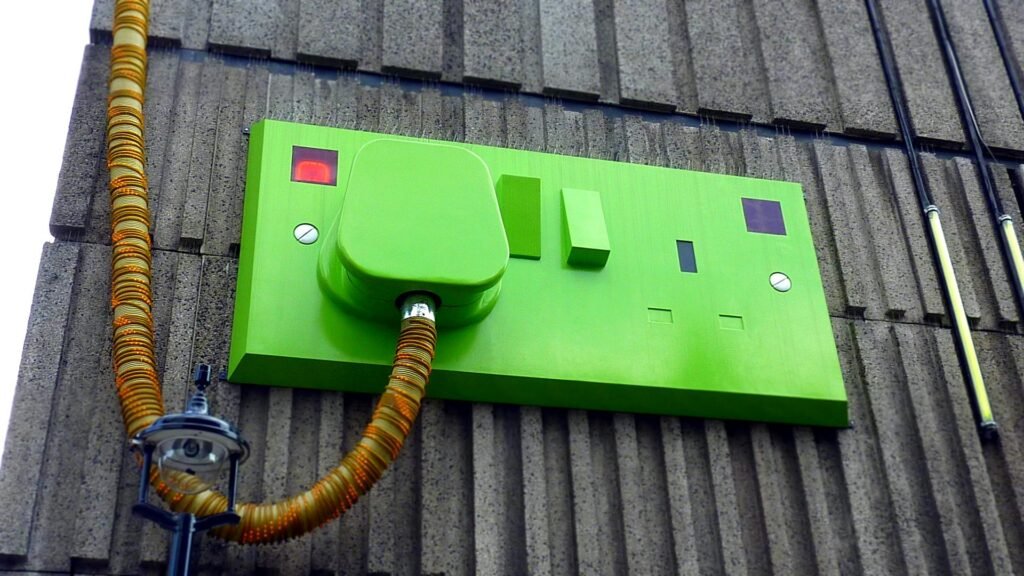Smart Home Basics: Affordable and Practical Smart Plugs

1. Introduction
Smart home technology promises convenience, energy savings, and enhanced security—but getting started can feel overwhelming and expensive. Smart plugs offer the most accessible entry point. Instead of rewiring or replacing appliances, simply plug one into an existing outlet and connect any device to gain remote on/off control, scheduling, energy monitoring, safety protections, and voice‑assistant integration. In this comprehensive guide, we’ll cover everything you need to know about choosing, installing, and using the best budget‑friendly smart plugs of 2025, so you can enjoy the benefits of home automation without breaking the bank.
2. Key Features of Smart Plugs
- Remote Control (On/Off)
Control any plugged‑in device from anywhere using a smartphone app. Prevent wasted energy and safety hazards by ensuring lights, irons, heaters, and other appliances are off when you’re away. - Scheduling & Automation
Create daily or weekly timers, countdowns, and “sunrise/sunset” triggers. Group smart plugs into scenes—such as “Morning Routine” or “Away Mode”—that activate multiple devices simultaneously. - Energy Monitoring
Track real‑time power consumption and cumulative energy usage. Identify high‑draw appliances, calculate running costs, and develop energy‑saving habits. - Voice‑Assistant Integration
Seamlessly pair with Amazon Alexa, Google Assistant, and Siri Shortcuts. Issue hands‑free commands like “Alexa, turn off the living room lamp” for effortless control. - Safety Protections
Built‑in overload protection, temperature sensors, and automatic shut‑off features guard against electrical faults, overheating, and fire risks. - Compact, Portable Form Factor
Slim profiles and minimal footprint allow installation in tight spaces and multiple outlets. Lightweight designs are easy to carry when traveling or renting.
3. How to Choose the Right Smart Plug
- Load Rating
Ensure a minimum rating of 10 A (2,400 W) to safely power high‑wattage appliances like kettles, air fryers, or space heaters. - Wi‑Fi Compatibility
Most smart plugs require a 2.4 GHz Wi‑Fi network. Verify your router supports this frequency; some advanced models also accommodate 5 GHz for improved performance. - App Ecosystem
Evaluate companion apps for stability, feature updates, and ease of use. Popular platforms include Smart Life, Tuya, and brand‑specific solutions that offer scene creation, energy reports, and voice‑assistant setup support. - Voice Assistant Support
Confirm compatibility with your preferred voice‑assistant ecosystem—Alexa, Google Assistant, or Apple HomeKit—to ensure seamless integration. - Outlet Configuration
Choose between single‑outlet, dual‑outlet, or multi‑outlet designs based on your power needs. Some models also include USB‑A or USB‑C ports for charging mobile devices. - Safety Certifications
Look for ETL, UL, CE, FCC, or equivalent safety approvals to guarantee product reliability and adherence to electrical standards. - Form Factor & Portability
Compact, low‑profile plugs fit behind furniture and in power strips. Lightweight designs allow you to bring smart control to rental properties, hotel rooms, or second homes.
4. Top 10 Affordable Smart Plugs of 2025
- TP‑Link Tapo P100
• Load Rating: 10 A / 2,200 W
• Features: Remote control, scheduling, countdown timer, voice control
• App: Tapo App (Android & iOS)
• Certifications: FCC, CE
• Price: US$15 - Meross MSS110
• Load Rating: 10 A / 2,400 W
• Features: HomeKit, Alexa & Google Assistant support, energy monitoring, overload protection
• App: Meross App
• Certifications: UL, FCC
• Price: US$17 - Sonoff S26 Lite
• Load Rating: 10 A / 2,200 W
• Features: Compact design, Smart Life App compatibility, schedule & scene creation
• App: eWeLink
• Certifications: FCC, CE
• Price: US$12 - TP‑Link Kasa HS103 (2‑Pack)
• Load Rating: 15 A / 3,000 W per outlet
• Features: Dual outlet share control, scheduling, away mode, security automation
• App: Kasa Smart App
• Certifications: UL, FCC
• Price: US$25 (two‑pack) - Xiaomi Mi Smart Plug
• Load Rating: 10 A / 2,200 W
• Features: Mi Home integration, energy usage reports, scene support
• App: Mi Home
• Certifications: 3C, CE
• Price: US$14 - BroadLink SP3S
• Load Rating: 10 A / 2,400 W
• Features: Voice quick wake, scene creation, real‑time energy display
• App: BroadLink App
• Certifications: CE, FCC
• Price: US$13 - Etekcity Voltson
• Load Rating: 15 A / 3,600 W
• Features: LED status indicator, overload safeguard, countdown timer
• App: VeSync
• Certifications: ETL, FCC
• Price: US$16 - Gosund WP3 (3‑Outlet)
• Load Rating: 10 A / 2,200 W per outlet
• Features: Three AC outlets + one USB‑A port, individual outlet control, surge protection
• App: Tuya Smart / Smart Life
• Certifications: ETL, FCC
• Price: US$20 - VoltSurge Smart Plug
• Load Rating: 12 A / 2,880 W
• Features: Built‑in surge protection, IFTTT and voice‑assistant support
• App: VoltSurge Connect
• Certifications: UL, FCC
• Price: US$18 - Levoit Smart Plug (Zigbee)
• Load Rating: 10 A / 2,200 W
• Features: Zigbee protocol—requires hub, low power usage, local mesh networking
• App: VeSync (with Zigbee Hub)
• Certifications: FCC, CE
• Price: US$22
5. Use Cases & Home Automation Scenes
- Living Room Lighting
Automate floor and table lamps to turn on at sunset and off at bedtime. Create an “Evening Relaxation” scene that dims lights and powers on a smart diffuser. - Morning Routine
Schedule your coffee maker or electric kettle to start brewing at your wake‑up time. Combine with smart curtains that open at sunrise for a gentle, automated start to your day. - Bedroom Environment
Link your air purifier and humidifier plugs to a “Sleep Mode” scene. After turning off bedroom lights at night, these devices power on at low fan speed to maintain optimal air quality until morning. - Elderly Care
Use a smart plug for night lights in hallways. Pair with motion sensors to automatically turn on lights if movement is detected after dark, reducing fall risks. - Rental & Travel
Bring smart plugs when traveling to transform any hotel or rental property into a smart space. Control room lights, fans, and heaters from your phone for comfort and security.
6. Setup & Maintenance Tips
- Ensure Strong Wi‑Fi Coverage
Place your router or a range extender near smart plugs to avoid connectivity issues. Most plugs operate only on 2.4 GHz networks. - Organize by Rooms & Groups
In the app, assign plugs to rooms (Living Room, Kitchen) and create groups for one‑tap control (All Lights Off). - Enable Automatic Firmware Updates
Keep firmware current to gain new features, improved stability, and security patches. - Use Manual Buttons as Backup
If Wi‑Fi is down, the physical on/off button on the plug still functions for local control. - Avoid Continuous Full‑Load Operation
Give high‑draw devices a rest to prevent overheating. Unplug permanently if not in use.
7. Frequently Asked Questions
Q: Can I control smart plugs when offline?
A: You can use the physical button to switch power locally, but remote app control and automation require an internet connection.
Q: Which is better: Zigbee or Wi‑Fi smart plugs?
A: Zigbee plugs need a compatible hub but offer low power consumption and stable mesh networking. Wi‑Fi plugs require no extra hardware but can be sensitive to network congestion.
Q: Are energy‑monitoring readings accurate?
A: Most smart plugs report within ±2% accuracy—adequate for identifying energy‑intensive appliances and reducing overall consumption.
Q: Can I control multiple outlets independently?
A: Dual‑ and multi‑outlet models allow individual outlet control, while scene settings enable batch operations across all outlets.
8. Conclusion
Smart plugs deliver an immediate, affordable introduction to home automation. By offering remote control, scheduling, energy monitoring, safety features, and voice‑assistant integration—all packaged in a simple plug‑and‑play form factor—they empower you to make your home smarter, safer, and more energy‑efficient with minimal investment. We hope this 2025 guide to the top ten affordable and practical smart plugs helps you select the right device to build your first connected home ecosystem and enjoy the convenience of a truly “smart” living space.







